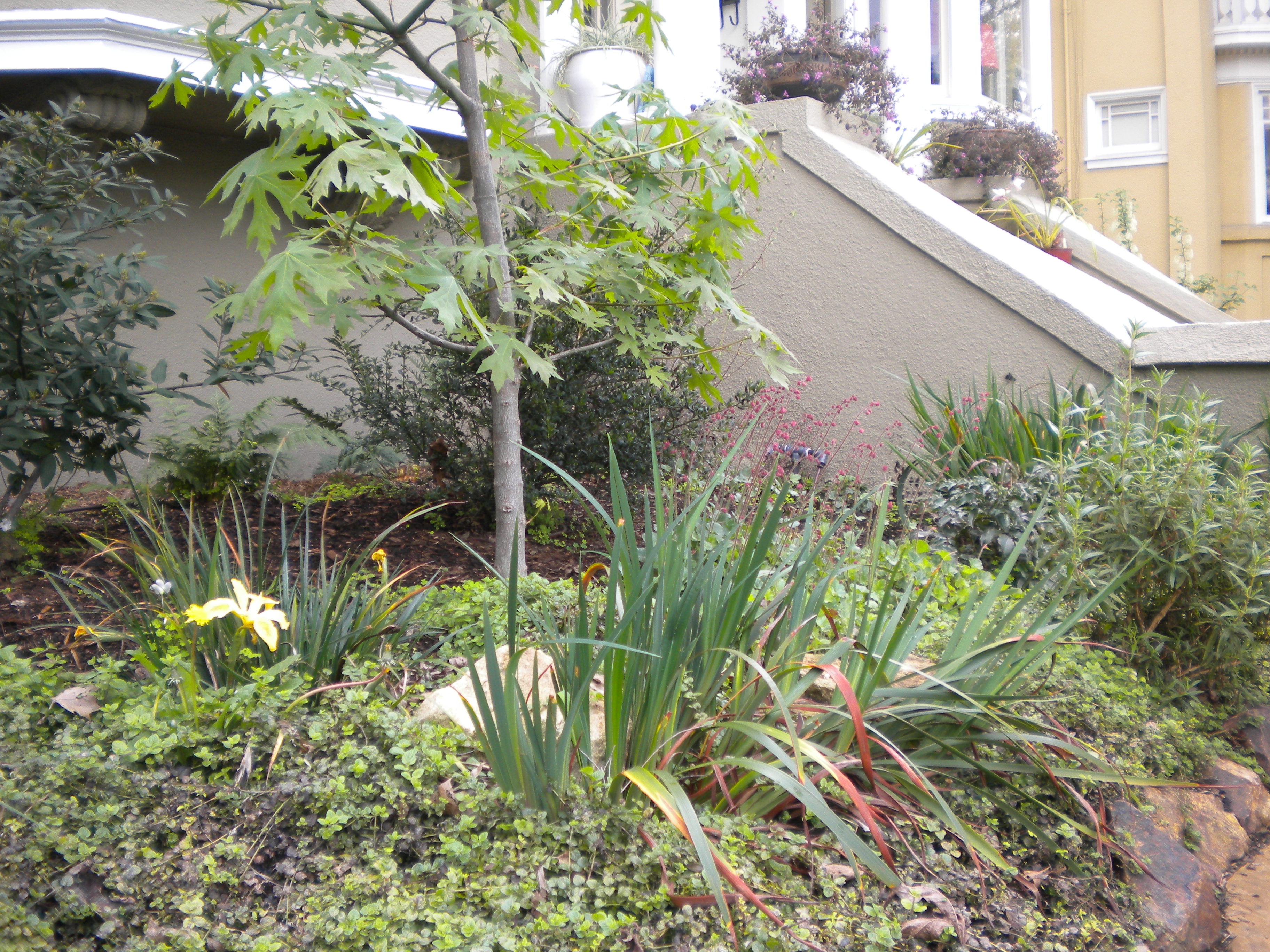I have often heard that California Native gardens look dry and weedy. This does not have to be the case.
The photo above is from a lawn conversion we completed two years ago. The area is North facing with heavy (Dark Matter heavy!) clay soils and seasonal drainage issues. The goals of the homeowners were to address the drainage and create a lush garden with very low maintenance requirements.
Drainage can be tricky. In this case, the property sloped toward the street and not another property. We devised and implemented a plan to keep as much water on site as possible to avoid discharging into the storm drains. [Gasp] “In clay soil?!” Yes, in clay soil. The downspouts were routed by triple-walled perforated drain pipe into massive trenches of drain rock. Should the trenched become exhausted, we had pop-up caps to allow the water to escape and seep across the surface. It has worked beautifully. An added benefit: the drain work afforded us an opportunity to address the heavy clay by amending it with rich compost and creating well-drained soil mounds. Once ready to plant, the fun really began.
We had taken weeks to assemble a plant palette that was based on a mixed evergreen community. We had selected primarily shade-loving and shade-tolerating plants that shared a similar range of soil and water requirements. Acer macrophyllum, and Cornus satomi anchored the garden and were accompanied by Rhamnus californica, Garrya elliptica, Corylus cornuta, Cercis occidentalis, and Ceanothus ‘Julia Phelps’. Accents and groundcovers were spiky Iris douglasii and PCH, soft Heuchera micrantha, sneaky Satureja douglasii, and [jazz hands] white Hellebore. Oh, there were some others: bulbs that like the season seep, some ferns that come and go, and a few short-lived perennials that temporarily fill-in until the shrubs fill-out.
You can see in the photo, this landscape is neither dry or weedy. California has over a dozen zones (depending on your reference material) and dozens of microclimates. If your microclimate is in fact dry, by all means pull together a palette of succulents with a Parkinsonia microphylla and a few Baccharis pilularis. Sneak in some Lavandula, Rosmarinus, and Salvia as well. Go ahead and search a few names that I dropped above. I think you will be pleasantly surprised how much life and color you can find in even a dry California Native garden.
Weeds… well, that’s a different story.

